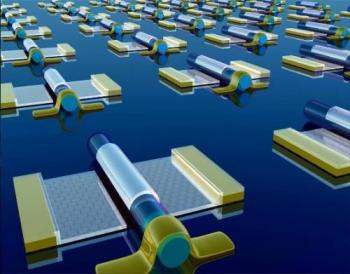Graphene is a one-atom-thick sheet of carbon capable of making electronic devices quicker and tinier. But the distinct properties of graphene and the trend of shrinking electronics creates difficultly in fabricating graphene and producing it on a large scale.
 Self-aligned graphene transistor array
Self-aligned graphene transistor array
This problem was resolved in September 2010, when UCLA research team reported that they have succeeded in fabricating graphene transistors with extreme speed. The self aligned gate for these transistors was nanowire, which enabled switching of the transistor between various states. Dielectrophoresis assembly approach was used by the researchers to place nanowire gate arrays accurately on an extended-area chemical vapor deposition -growth graphene, to enable fabricate high-speed transistor arrays rationally, in contrast to mechanically peeled graphene flakes. This was done on a glass substrate, reducing parasitic delay and forming graphene transistors with extrinsic cut-off frequencies reaching above 50 GHz.
The high-speed graphene transistors are formed on either silicon or semi-insulating silicon carbide substrate that emits electric charge resulting in extrinsic cut-off frequencies of about 10 GHz or less. Furthermore, the UCLA team succeeded in using these graphene transistors to produce radio-frequency circuits operating up to 10 GHz, a considerable improvement from earlier reports of 20 MHz.
The research provided a significant advancement towards radio-frequency circuits which are graphene-based to be used in several other devices such as computers, radios, and cell phones. Also, the technology can be used in wireless imaging, radar technologies, and communication. Nano Letters, a peer-reviewed journal, recently published this research.